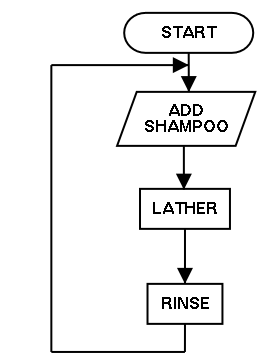How to Build Accountability & Responsibility Instead
(July 2023 Update)
As the landscape continues to shift around return-to-office, and work life shifts in the new normal between blended office and home-office spaces, you may be grappling with these latest challenges to manage/ lead your teams effectively. Many leaders suggest that they’re experiencing lack of accountability as a primary outcome. You may wonder if employees are fully productive while not working under your watchful eye. By taking a closer look at why managers and teams struggle with achieving true accountability, and injecting some disciplined day-to-day practices, you can help your team perform more effectively, responsibly and transparently.
Clearly, “leading by walking around” physically isn’t fully satisfying in hybrid-work times. But let’s be clear: for many of us, past practices of accountability and productivity were largely performative and not regularly effective.
This is a great moment to confront some old assumptions – and use new approaches to create true, shared accountability within teams. We’ll want to find ways to express more curiosity with each other. We’ll want to work more intentionally and explicitly to establish clear and transparent expectations. And we’ll want to develop new skills for both demonstrating and asking for accountability in seeking shared outcomes. When you work this way as a leader, you create conditions which lead to greater accountability and more demonstrations of responsibility by your people.
Leadership behaviors that suboptimize team efforts: Needing to “see people in the office”
In our overcaffeinated, notification-heavy work culture, we accept the assumption that “putting in the time” is what matters at work. It’s why many managers focus on bringing employees back to the office, where they can “eyes-on see” if their teams are working hard. But watching people work is not an effective response to lack of accountability.
Kara Lawson, Head Coach for Duke’s Women’s Basketball team, calls out high-effort/ low-yield actions. She describes these as people mistaking the activity of working hard with the behavior of competing (i.e., celebrating effort vs focusing intently and intentionally on value-creating outcomes). Unfortunately, many leaders encourage “working-hard” activity-focused behaviors – and often misdirect associated rewards. Instead, we want to actively look for and celebrate those who actually make difficult choices among competing priorities, set boundaries, and deliver work efficiently (in less time) while achieving desired results (whether we see them do so, or not).
We inadvertently support the “appearance” of working hard when we: over-detail status reports; settle for poorly-worded goals and targets; send too many status meeting invites; over-index on our contributions in Slack, or work late at our home-office desk. When we work this way without intention or focus on the value of the work itself; when we participate primarily to be seen by others; or when we engage to excess: we perform our work as a “Live-Action Role-Play” (Anne Helen Peterson, ‘LARP’ing your job’). A contributor who focuses on being seen by others, or nurtures “essential” or “go-to-expert” status, may actually add unnecessary work for your team – and not create enough real value for you, the team, or your organization.
Admittedly, those who game “the system” with appearances of productivity have challenges in a hybrid environment. Employees/ staff may use different tactics to fully support the illusion of working hard when supervisors don’t have ways or capacity to watch. They especially do this when they experience challenges they can’t address alone (ie, conflict or tension at work/ on the team); when purpose in the work is missing; or when alignment is low (ie, team members experience conflicting messages on what’s most important).
For teams to succeed in this next era of changed work environments and patterns, leaders need a more conscious, active and effective approach to create and encourage true accountability.
Here’s how it can work.
Make accountability true and transparent
Why do some organizations experience exponential growth (ExOs) and results 10x greater than their peers? Research analyzing these organizations indicates that qualities of autonomy, trust, and openness are key to their success. Using these qualities with intention to address lack of accountability requires leaders to shift focus to clear definitions of the outcomes we want to create (video).
Using the language of objectives and key results (“OKRs”) first developed by Andrew Grove at Intel, later expanded on by John Doerr in Measure What Matters, you can describe worthy high-value work as:
- “I will [objective] as measured by [key result]”
- OKR Example: “I will successfully onboard 3 new clients each month as measured by the Monthly Active Clients Report.”
An objective is a statement of intention, focus and direction over time. A key result is a tangible, objective business result. This focus ensures that what we agree to be accountable for IS based on value-creating; and ISN’T based only on work effort or activity. And this focus clarifies how we’ll measure our success at achieving the desired outcome.
Clarify commitments through team conversation
Once leaders and teams have defined these objectives and results, you can take your team through a deeper exploration with each other to identify what’s needed to succeed. Doerr calls this part of the work Conversations, Feedback and Recognition (CFRs), which help us to explore our understanding of the work, and surface concerns in order to address or mitigate them before they create problems.
In many cases, leaders and teams will benefit from creating richer conversations where contributors not only list goals themselves, but discover and share what’s in it for each to achieve them. This means that team leadership will go beyond announcing goals publicly in simple, one-directional cascades (goals that flow from the top down, only). Instead, team leaders will create opportunities for all to contribute their own thinking, and engage in the messy, productive (and candid, strategic) dialogue with others. These conversations dive into the purpose of the work, definitions of the work itself, the value of it – and what doing the work and achieving the desired outcomes might mean for each person.
Team conversation questions might include
- Regarding what we’re doing here: What matters to you?
- What’s the biggest challenge for you in this work?
- What will you need from others in order to achieve success? What do you need from me?
- How will you start?
- How will you know if you’re off track? What will you do if that happens?
These coaching-style questions within and across your team – including your candid participation as leader – invite open conversations about the purpose and assumptions underlying your shared, collaborative work.
How we work together impacts our ability to succeed individually. And in a high-trust psychologically safe environment, these explorations bring to the surface the fears and challenges that people often avoid or attempt to bury beyond the attention of others when effort (and LARPing), rather than value/ outcomes, become the priority. These conversations directly and substantially address lack of accountability.
Create conditions for true accountability
To create teams and environments that model true accountability, we need to start by examining existing collaborative work processes. What is working well? What changes do we need to make to successfully operate in our fluid dynamic workplace? For example, leaders who post team targets and wins on their whiteboard (hoping to bring all the team members back to the office) just won’t reach those who have reconsidered work on site.
Find new ways to make shared agreements visible within the team. Consider creating and sharing team agreements or commitments that specify the desired outcome, describe what each contributor brings to the work, highlights the impact/ consequences for each if they miss deadlines, and names each contributor’s needs in order to complete the work. Instead of focusing only on “due by,” set expectations regarding when team members will receive key inputs (and the quality of those inputs), how the team will monitor external factors, and how you’ll surface disagreements that the team will want to resolve.
To document these newly-clarified “ways of working”, your teams can create personal “user manuals” detailing desired conditions to optimize participation and work output. (See this great example from Atlassian). As a leader, collaborative work management with your team in these ways creates greater certainty around not only what we’re working to build together – but also how we will do it. This is particularly important in hybrid spaces, when we are less able to rely on synchronous meetings and non-verbal or body language signals to communicate our needs.
From “one and done” to “living agreements”: lather, rinse, repeat
We talk about “forming, storming, norming and performing” as stages of team dynamics. And we may hold the assumption that “once we achieve high levels of effectiveness, our team and our work will operate in this new orderly way indefinitely”. But our ways of working are changing at a constant pace, with new priorities surfacing daily (sometimes more frequently than that). While the pandemic and economic recovery has forced many work adaptations, evolving challenges demand that we regularly revisit and renew our collaborative work practices. Failing to revisit how we’re working, while the conditions around us change regularly, is a recipe for lack of accountability as people experience more conflict, misalignment, and less purposeful, successful work.
Research from McKinsey notes that “adaptability is an evergreen skill.” (This is short-hand for both specific practical capability and “growth” attitude/ mindset – in support of mental flexibility.) McKinsey writes about this capability for individuals – and it is absolutely relevant for teams as well. As you develop written, shared agreements for work within your team, let people know how you will update them on a regular, ongoing basis. This might include schedule-based refreshing (e.g., adding “agreement renewal” as a scheduled, monthly review step) or when the team experiences certain “trigger events” within the work (e.g., when the team completes deliverables, when client requirements change, when team members change, or when the team misses scheduled dates).

Reviewing how well your shared agreements serve your team along the way, as well as when you complete projects, will help team members assess what to do differently when working together in the future. By creating space for ongoing discussions, you’re ensuring that agreements are open, relevant, and transparent: focused on supporting true accountability, and weeding out weak accountability.
As leaders, it’s your role to help your team establish new practices to see and create real value—and to support your team in taking true accountability for creating real value—instead of only focusing on work effort. Creating collaborative conversational practices, explicitly exploring new ways to make team agreements, and other team-effectiveness practices will help your team perform more effectively now – and grow, adapt, update, and recommit with each new priority.
Is a spark missing in your collaborative work management? Feel some concern about how you, your managers or teams in your organization are pursuing accountability? Let’s talk to diagnose, explore options, and frame next steps.


